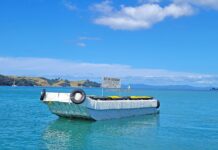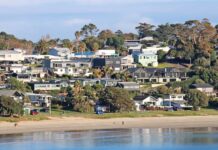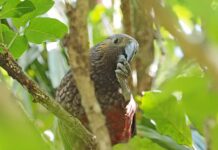
Ngāti Paoa Iwi Trust has placed a rāhui [restriction] on waters around two popular north-facing Waiheke beaches in efforts to fight the spread of the invasive seaweed exotic caulerpa.
Zones within one nautical mile (1.8km) of Thompson’s Point and Onetangi Bay are covered by the rāhui, with instructions to avoid the areas if possible. It is now considered high risk to anchor boats here or carry out activity that disturbs the seabed, like fishing, diving or scuba.
Meanwhile specialist divers have been working to locate the outer edges of the caulerpa infestation and Ngāti Paoa is sourcing equipment for its removal.
Ngāti Paoa Iwi Trust chair Herearoha Skipper says the iwi is working with the Waiheke Local Board to help set up headquarters on the island to coordinate a response.
Caulerpa is known to spread rapidly, forming dense underwater fields which overwhelm native seaweeds and alter the marine habitat. This leaves fish, molluscs and other species struggling to survive.
Herearoha likens it to kauri die-back in the ocean and says it could bring “total devastation” to Waiheke.
“It’s all hands on deck,” she said. “I have a team employed by Ngāti Paoa to get this work done. “We need clear and concise communications so that people just avoid those areas by any means possible.”
Herearoha says she has been advised the caulerpa has grown too fast, too thick and too far to be dealt with by hand-pulling in some areas, and requires specialist equipment for suction and a barge. • Liza Hamilton
Full story in this week’s Gulf News… out Now!!!






